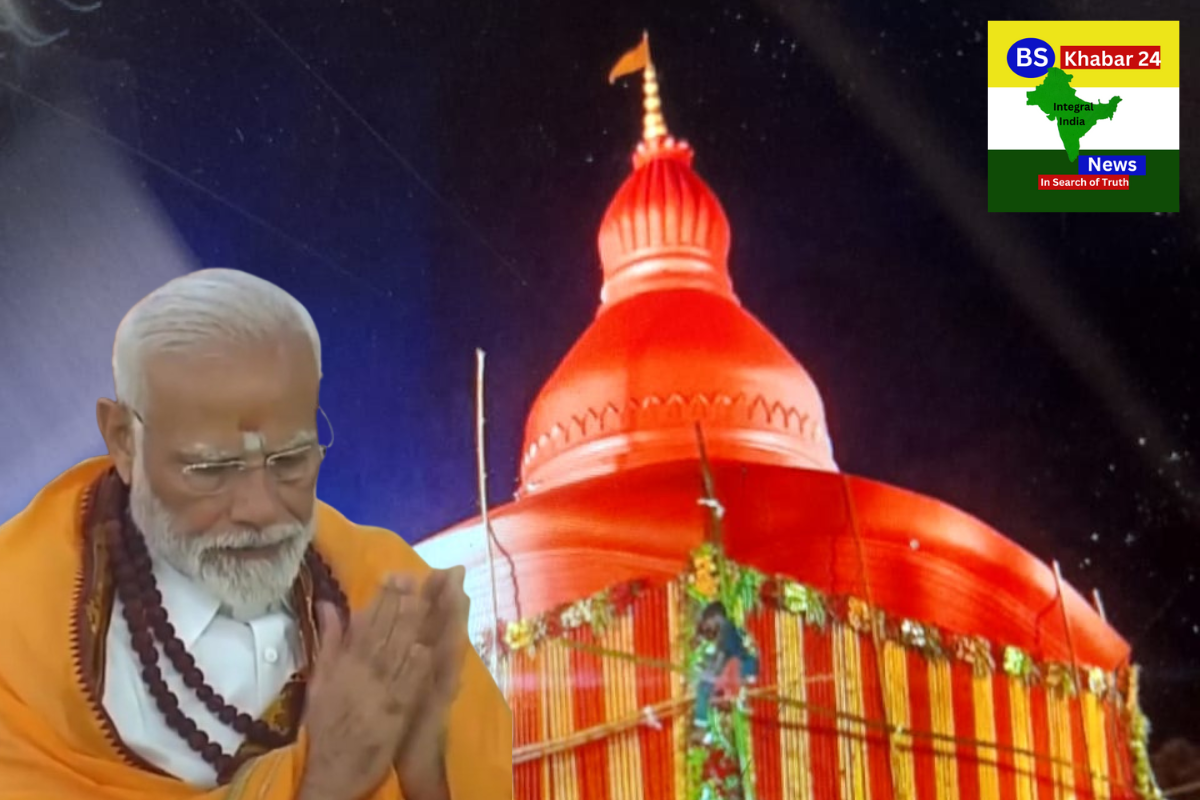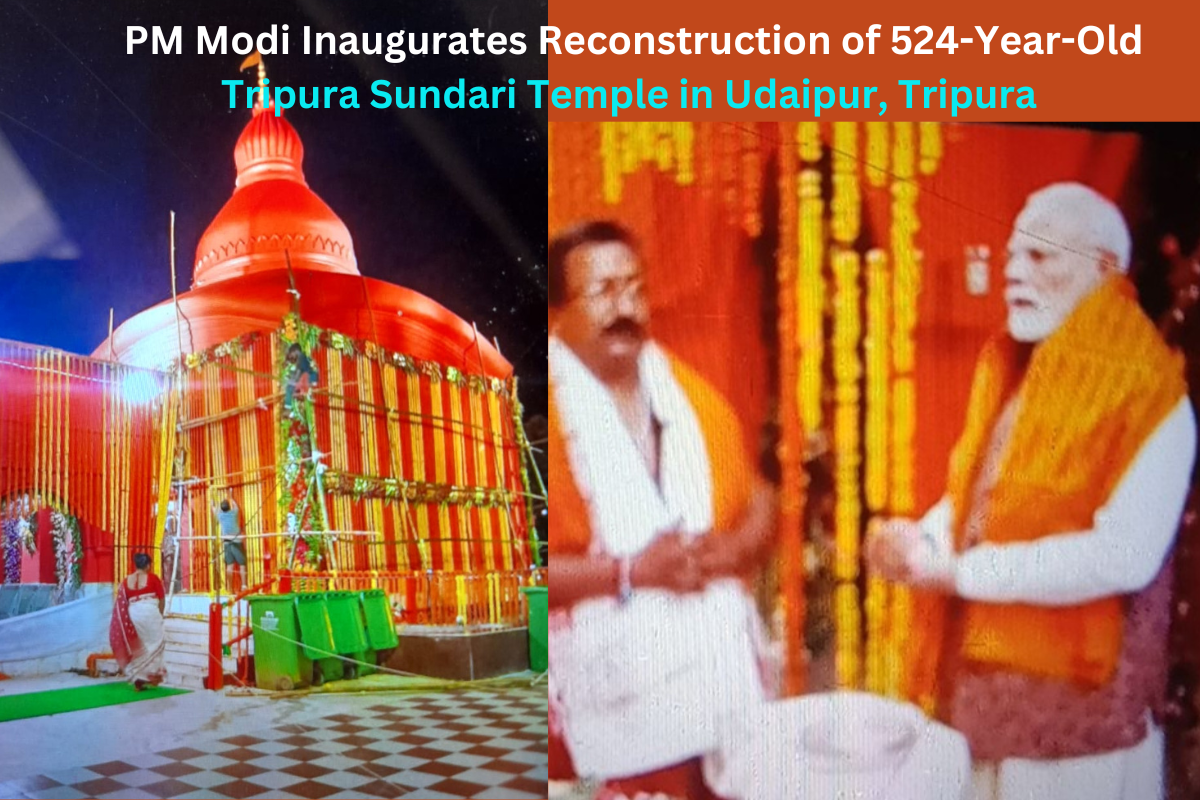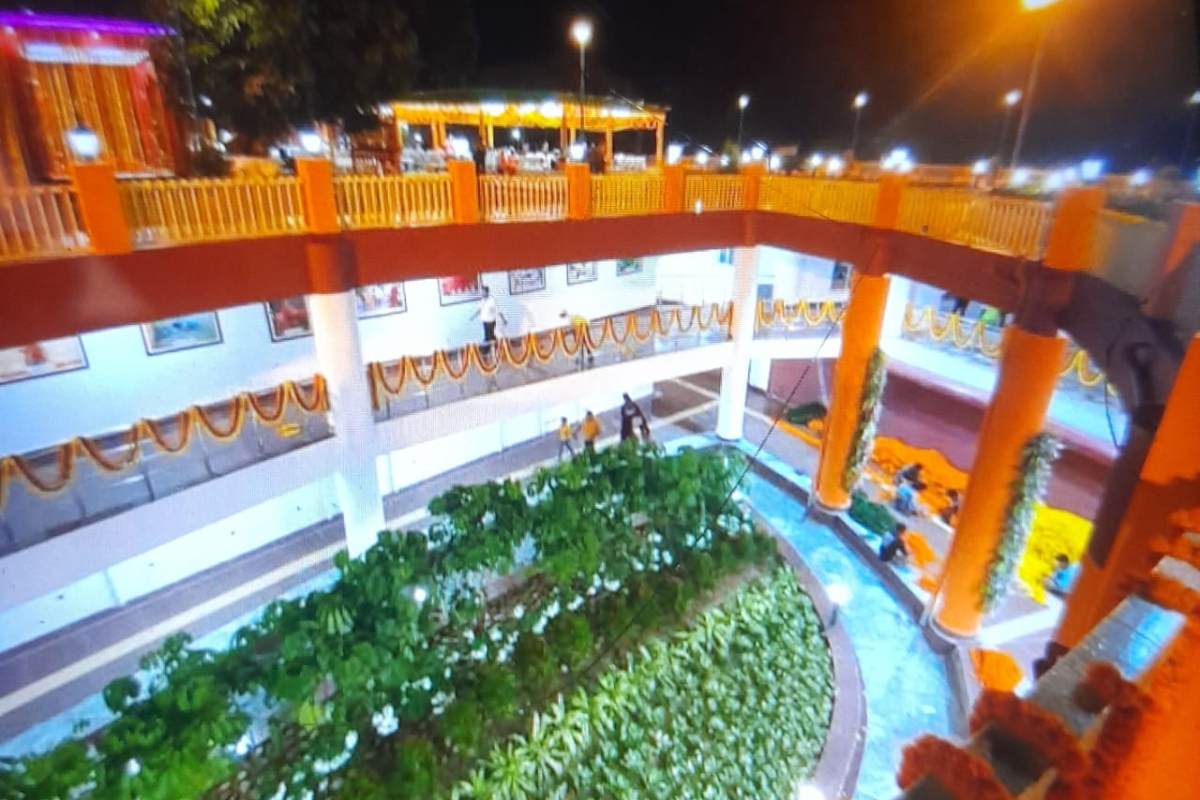“PM Modi Inaugurates Reconstruction of 524-Year-Old Tripura Sundari Temple in Tripura Under PRASAD Scheme”

The restoration of the ancient Tripura Sundari Temple, one of India’s holiest Shakti Peeths, located in Udaipur, Gomati district, was officially opened by Prime Minister Narendra Modi on Monday(PM Modi inaugurates reconstruction). Under the Union Government’s PRASAD (Pilgrimage Rejuvenation and Spiritual Augmentation Drive) scheme, the temple—which is held in high regard by millions of devotees—has undergone a significant restoration and beautification project, adding a new spiritual and cultural dimension to Tripura’s legacy.
In addition to restoring the historical splendour of the 524-year-old temple, the restoration and conservation efforts, which came at a cost of more than ₹54 crore, have created new opportunities for religious tourism in the northeast. According to senior officials in the tourism department, the central government provided ₹34.43 crore of the project’s overall cost, while the state government of Tripura contributed ₹17.61 crore.
PM Modi’s Visit to Tripura Sundari Temple
Thousands of people came to see the historic event, and Prime Minister Modi’s visit to Tripura produced a joyous environment throughout the state. The Prime Minister took a helicopter from Agartala to Udaipur, which is around 60 kilometres from the state capital and is where the temple is situated.
The Prime Minister led a spectacular 12-kilometer roadshow from the helipad of the Palatana Power Plant to the temple upon arriving in Udaipur. Both sides of the road were lined with men, women, and children who enthusiastically greeted the prime minister while singing slogans and waving the flag of their country.
When Modi arrived to the temple, he officially opened the renovated Tripureshwari Temple project, revealing the redesigned complex with improved facilities, a more serene atmosphere, and a more welcoming setting for tourists.
Following the opening, he visited the neighbouring Kali temple and offered prayers to Goddess Tripura Sundari, also called Maa Tripureshwari. Later, he gave a thorough tour of the exhibit that highlighted the temple’s centuries-old significance while presenting the rich history of the Tripura Manikya dynasty.
A Landmark Visit(PM Modi inaugurates reconstruction)
This was Prime Minister Modi’s second visit to the Tripura Sundari Temple in his capacity as prime minister and his eleventh trip to the state since taking office. Prior to the Lok Sabha elections, on April 7, 2019, he made his first visit to the temple and offered prayers at the shrine. Prior to this occasion, he had only visited Tripura once, on April 17, 2024, during the campaign for the parliamentary election.PM Modi inaugurates reconstruction.
BJP state president and Rajya Sabha MP Rajiv Bhattacharya, Tripura Governor Indra Sena Reddy Nallu, Chief Minister Manik Saha, and other high-ranking officials were among the dignitaries who accompanied the prime minister.

Later, on social media, Chief Minister Manik Saha posted a picture of the exquisitely lit temple complex. He wrote:
The PRASAD project’s new Matri Griha infrastructure has a captivating nighttime vista that is truly divine. The new building, which is blessed with the Matri Griha, is a testament to our government’s profound appreciation and respect for protecting our spiritual and cultural legacy.
Historical and Religious Significance of Tripura Sundari Temple
One of the 51 Shakti Peeths that Hindus worship is the Tripura Sundari Temple, also called Maa Tripureshwari Mandir or just Matabari. One of the greatest monarchs of the Tripura kingdom, Maharaja Dhanya Manikya, is thought to have founded the temple around 1501 AD.(PM Modi inaugurates reconstruction).
The temple has a square sanctum with a single dome on top, and it was built in the traditional Bengali Ek-Ratna style. The shrine has the unusual name Kurmapeeth because it is situated on a tiny mound that resembles a tortoise (Kurma means tortoise).
Inside the sanctum, the temple houses two black stone idols:
* An idol of the ruling deity, Goddess Tripura Sundari, standing five feet tall. a 2-foot statue of Goddess Chandi, also known as “Little Mother” or Choto-Ma.
The smaller idol of Choto-Ma was traditionally carried by the monarchs of Tripura on royal hunts and military excursions in an effort to obtain protection and heavenly favours.
Cultural Heritage and Special Offerings
The temple has developed into Tripura’s spiritual beating heart over the ages. To further solidify its cultural identity, the Matabari Pedda, a dessert served as prasad at the temple, has been granted the Geographical Indication (GI) designation.
Held every year during the festival of lights, the temple is also well-known for its Diwali Mela (fair). Due to the temple’s close proximity to the international border, this fair draws thousands of devotees from Tripura, neighbouring states, and even Bangladesh. In addition to being a religious assembly, the mela is a significant cultural and commercial occasion for the neighbourhood.
Economic and Tourism Boost
According to officials, the temple’s foot traffic would rise dramatically as a result of the renovation and beautification project. Nowadays, the sanctuary receives between 3,000 and 3,500 people every day. This number is anticipated to increase to 5,000–7,000 visitors per day with the improved amenities.
The local economy is probably going to be impacted by this growth in a multiplier fashion. It will generate fresh job openings for:
* Local tour guides
*Temple employees and priests
*Shopkeepers and street vendors
*Hoteliers and restaurateurs
*Transportation providers
Furthermore, the PRASAD scheme’s focus on environmentally friendly and sustainable tourism guarantees that the development won’t compromise the temple’s sanctity while advancing the state as a top spiritual tourism destination in India.
PRASAD Scheme and Spiritual Revival
In order to improve amenities for pilgrims and tourists, the Ministry of Tourism launched the PRASAD scheme, which focusses on the integrated development of pilgrimage sites throughout India. Enhancing the traveler experience while protecting India’s spiritual legacy is the goal.PM Modi inaugurates reconstruction.
One of the most ambitious undertakings in the northeast under this strategy is the renovation of the Tripura Sundari Temple. The temple today combines historic customs with modern conveniences, including enhanced walkways, sophisticated lighting, hygienic surroundings, and spiritual gardens.PM Modi inaugurates reconstruction.
Voices from the Ground
Local devotees and community leaders expressed joy at the temple’s revival. Many believe that the renovation will not only uplift the temple’s grandeur but also reinforce Tripura’s cultural identity.PM Modi inaugurates reconstruction.
A local devotee shared:
“For us, Maa Tripureshwari is not just a goddess but our mother. The renovated temple is a blessing, and seeing the Prime Minister himself inaugurate it makes us feel proud.”
Another temple priest added:
“This shrine has been central to our lives for generations. With the new infrastructure, we can now welcome more devotees with dignity and devotion.”PM Modi inaugurates reconstruction.
Political and Social Impact
The inauguration also carries a strong political and social message. By reviving one of Tripura’s most sacred sites, the Union Government has underlined its commitment to preserving the cultural and spiritual ethos of the northeast.
Tripura, a state with rich traditions, has often been at the crossroads of history, connecting India with Southeast Asia. Strengthening its spiritual tourism potential aligns with broader national initiatives to integrate the northeast with the rest of the country through development, culture, and faith.

Conclusion: A Blend of Faith, Culture, and Development
The reconstruction of the 524-year-old Tripura Sundari Temple is more than just a restoration project—it is a revival of faith, history, and heritage. For the people of Tripura, it is a proud reminder of their glorious past under the Manikya dynasty and a promise of a brighter future through cultural tourism.PM Modi inaugurates reconstruction.
Prime Minister Narendra Modi’s presence at the inauguration added both national attention and emotional value to the occasion. With its new look, improved facilities, and deeper cultural resonance, the temple is poised to become not only a spiritual hub but also a driver of economic growth and cultural pride in Tripura.
As lakhs of devotees prepare to flock to Udaipur for the upcoming Diwali Mela, the temple stands tall as a shining example of how India’s ancient traditions can be preserved and celebrated in modern times—bringing together faith, heritage, and development in perfect harmony.
